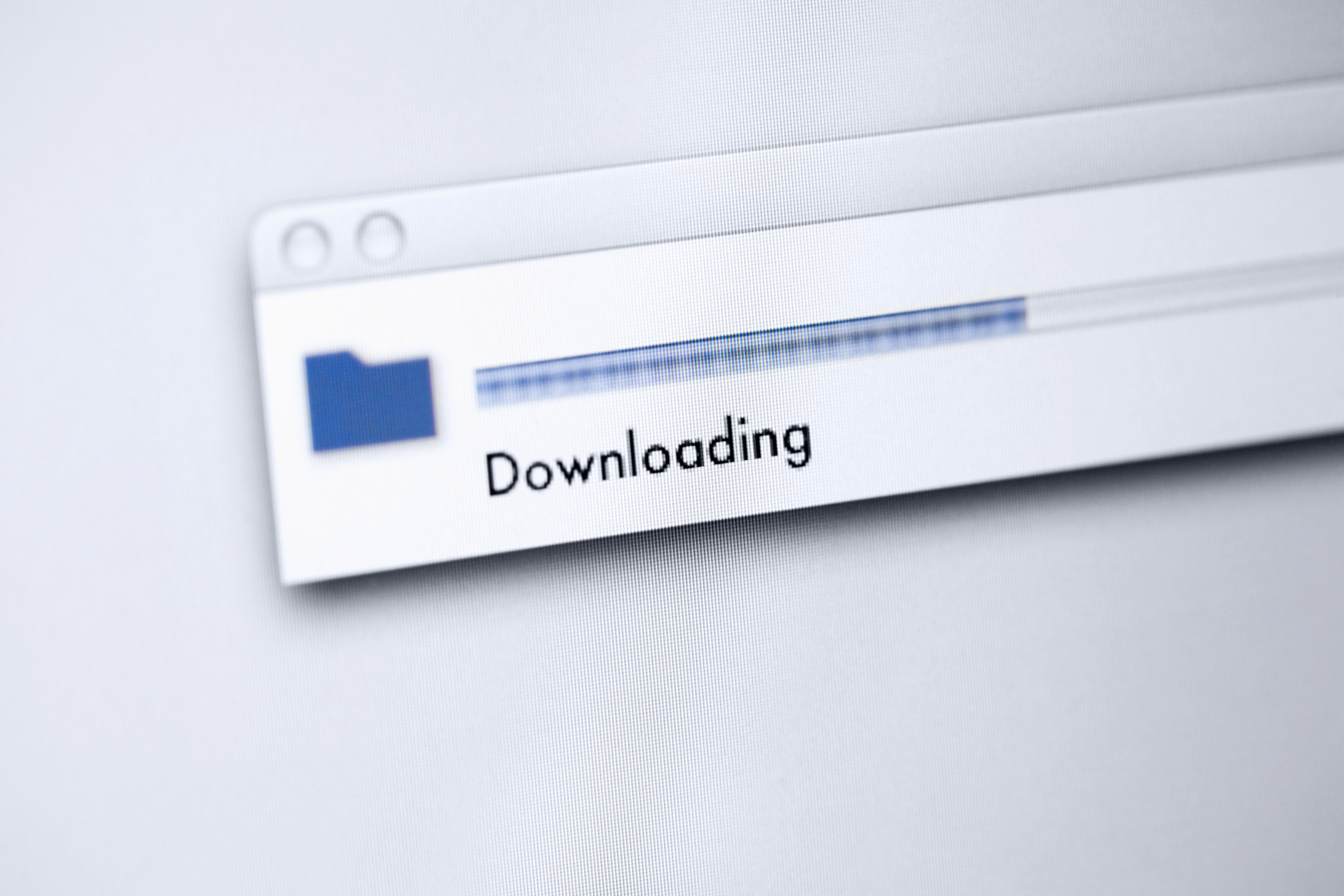Broadband speeds explained – what is a good speed for home broadband?
Is your broadband speed is up to snuff?

Overall broadband speed is typically one of the more eye-catching elements we're drawn to when looking for one of the best broadband deals. From terms like 'superfast', to 'ultrafast' and even 'standard ADSL' – we have a wide variety of broadband speed options and definitions, but at the same time, this can make choosing the right one for your needs a little complex.
You might also think that just opting for the fastest speed is the best course of action. However, these are typically the most expensive packages and not always the best bang for your buck.
So before you sign on the dotted line and decide which broadband plan is the one for you, take a read through this guide to answer some burning questions about broadband speeds, service, and just what all of the underlying options may be.
What different broadband speeds are available?
In general, providers put broadband speeds into three main areas:
Standard: Also known as simply ADSL broadband, which has average speeds of 10-11Mbps and is usually the cheapest option.
Superfast: This is the most commonly used broadband in the UK. It gives speeds ranging from 30Mbps to 300Mbps and whether you can get these depends on if your home has access to a 'fibre' or FTTC network. As you can guess, the prices of these deals can also range considerably.
Ultrafast: These are the fastest and most expensive packages and are often subject to a property's fibre - but specifically 'Full Fibre' - connectivity, speeds can technically be unlimited but will range from 300-1,000+Mbps.
Mbps means 'megabits per second' and is the average download speed you can get from your broadband. It's also an easy way to compare the average speeds offered by broadband providers.
As packages are invariably more expensive the higher the speeds go, it's a good idea to think about how much you'd prefer to spend on your broadband each month before you shop around. You should also factor in different broadband types that can facilitate different speeds. You can learn more about these in our guide here.
You may also need to check with a provider about what access your property has to different broadband networks. For instance, you may need a FTTP connection installed to get ultrafast full-fibre service

Download speeds and upload speeds
When looking at broadband speeds, it's the average download speeds that tend to pull focus as they're the larger numbers, but upload speeds are important too. If we look at each individually, you can see why:
Download: This is the amount of data in megabits per second (Mbps) you can download from your provider's server, and ultimately, it determines how quickly you can receive information online.
Upload: This is how quickly your broadband connection allows you to send data in Mbps from your device to another, or to a server. These are typically much lower than download speeds, but as a rule of thumb, anything around or above 5Mbps is considered faster.
In either case, the higher these Mbps figures are, the better the performance you'll get online.
You may also see 'symmetrical' speeds being offered now, which as you might have guessed, sees you get the same download and upload speeds. These are only available on Full Fibre broadband deals.
How broadband speeds can be affected
The speed you need of course mainly depends on your household's download and data usage. At the same time, the size of your household and the number of users and devices will also have a big bearing how much bandwidth you're using. In simple terms, low broadband speeds and lots of devices can result in slower connections.
To add to this, if you try using the internet at 'peak times' - in other words, when lots of users are online - you may also see a dip in your broadband speed.
Another big factor is simply the speeds you can actually get in your area. If you've yet to have fibre or Full Fibre connections installed, you will find a big difference in what speeds are on offer to you.
One way to check in real time what you need is to get everything running at once with your current broadband – kids on tablets and online gaming consoles, smart gadgets, the streaming UHD content and a laptop downloading. Then run a speed test and see what you're getting and then minus that from the average speed you're supposed to get and you'll see the difference.
Why might I need a higher broadband speed?
If your broadband is slow, you won't need to be told why more speed is better. It can mean waiting longer for downloads of files and photos, lower quality video streaming or that constant buffering alert. It can even mean dropped connections and an inability to use certain devices.
Equally, if you live in a household with lots of people who will be using lots of devices at once, it quickly takes up a lot of bandwith that slower connections can't effectively fulfil.

What is a good broadband speed?
This is a subjective matter of course, but for a good and reliable speed, you're going to want a package with unlimited data with what many providers refer to as a 'future-proofed' full fibre connection. Such ultrafast options give average download speeds above 300Mbps.
This is because Full Fibre uses fibre optic cables to transmit data to your property, rather than the standard copper lines you get partly with FTTC and fully with ADSL lines. These lines are limited by how much data they can transmit – hence the slower speeds of such broadband packages.
However, you might not have access to such networks in your area yet, in which case other services like phone network broadband could be a good option.
More and more households are turning to 4G home broadband and 5G home broadband as you can get speeds over 100Mbps all without a fixed broadband connection. Although, the speeds here are subject to network coverage in your area.
What broadband speed do I need?
As mentioned above, full fibre broadband can now reach speeds of up to 1,000Mbps in some areas. However, for real-world use, that might be overdoing it.
For a large family that has lots of smart devices (e.g. phones, tablets, computers) and likes to stream in 4K and UHD, as well as online games, you might get close to using that bandwidth. But, realistically, a line closer to the 100-150Mbps mark will also probably suit those needs.
Keep in mind you may be able to go for one level of speed and then upgrade to a faster one, so perhaps pick a company and go in increments until you're happy. Or, if cost isn't an issue for you, go for the fastest and know you'll always have enough speed.
Lastly, you may want to factor in the reputation and the extras you can get from your broadband provider to give you better value for money with your package. For some top tips on this, have a look at our guide to finding the best broadband provider for you.
How to find out your current broadband speeds
If you're trying to assess whether you have a decent broadband speed, you of course need to know what you're currently getting too. There are several ways you can do this, namely with the use of an internet speed test.
- Use a broadband speed test.
- Log into your online account (if you have one) to see what your broadband package includes.
- Check any contract documentation you may have been sent in the post by your provider when you signed up.
- Directly contact your provider to get them to tell you.

Broadband speed: FAQs
To help give you a more rounded picture of what good broadband speeds look like, here are the answers to some of the top frequently asked questions people have on this subject:
What's the UK's average broadband speed?
According to the most recent report by Ofcom – the UK broadband industry regulator – the average home broadband speed in this country is 65.3Mbps. The same report also says that 9/10 UK homes are on 'superfast' broadband packages.
What's the fastest broadband speed you can get in the UK?
There are a few providers that offer gigabit-capable internet which lets you get a connection that gives average download speeds of 1,000Mbps (or 1Gbps) or higher.
Right now the fastest connection that's available from a popular provider is Virgin Media's Gig2 option. This gives average download speeds of 2,000Mbps.
However, this technically isn't widely available yet as only certain households on Virgin's network can get it. So, actually, the fastest package that is is offered right now is by EE, it's 1.6Gbps top speed.
Can I get any speed from any provider?
Not at the moment, no. Despite the fact most internet service providers (ISPs) use the Openreach network to supply their broadband to customers - meaning they theoretically could have the same speeds across the board - not all of them offer the same average download speeds in their packages.
Can I complain about not getting fast enough broadband speeds?
Yes, you can. It's one thing to purchase a broadband package with what appears to be good speed, but if you consistently fail to get what you've been promised, you're within your rights to complain.
Some providers circumvent this by having 'minimum speed guarantees' in their contracts to cover fluctuations in speed performance. But if you are unhappy, the best course of action is to record and log your speeds over a prolonged period to use as evidence when lodging a complaint.
It might be that you get money back, a discount on a better deal, or the opportunity to switch to another provider without paying any exit fees. This can vary from ISP to ISP.
How fast will broadband speeds be in 10 years?
No one knows exactly how fast broadband will be in 10 years, but we can assume that average broadband speeds will go up significantly in the UK.
We're already seeing network providers like Openreach and Virgin upgrading their networks to offer faster speeds to more areas. What's more, the government's 'Project Gigabit' programme has already made big strides in making 1,000+Mbps connections more accessible.
Finding the best broadband deals and speeds
With all the above you should now have a better idea of what a good broadband speed looks like and the different options you have with providers. But the last thing you might need some guidance with is where you can find the best deals on such connections.
We can help with this with our guide to the best broadband deals, where we share the latest offers from the nation's leading ISPs. What's more, if you want to know specifically what tariffs are available in your area, you can enter your postcode into our widget below and we'll quickly show you what you can get right now.
Get daily insight, inspiration and deals in your inbox
Sign up for breaking news, reviews, opinion, top tech deals, and more.

Adam is the Editorial Director of High-Yield content at Future. Leading an outstanding team, he oversees many articles the publisher produces about subscriptions and services including VPN, TV streaming, and broadband. In addition to identifying new e-commerce opportunities, he has produced extensive buying guides, how-to-watch content, deal news, and in-depth reviews. Adam's work can be seen on numerous Future brands including TechRadar, Tom's Guide, T3, TTR, Android Central, iMore, Windows Central, and Real Homes.